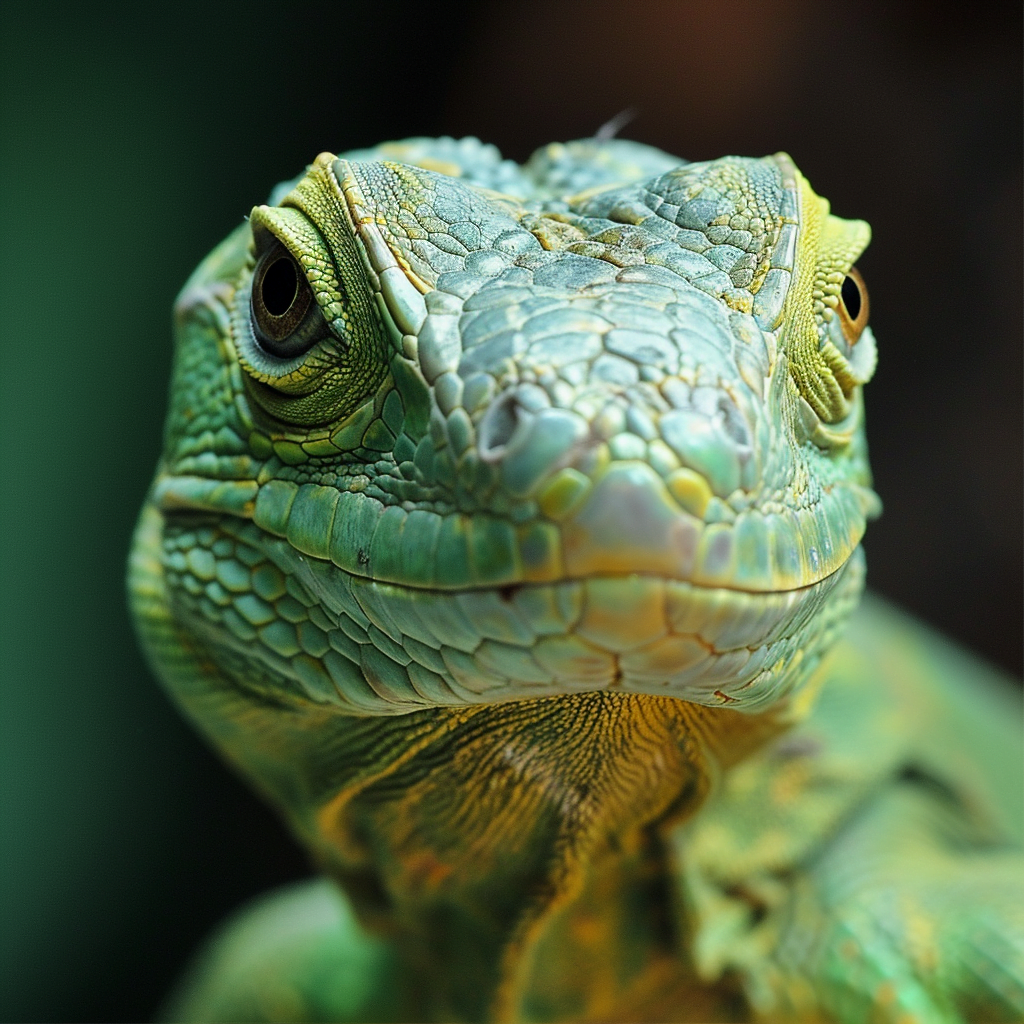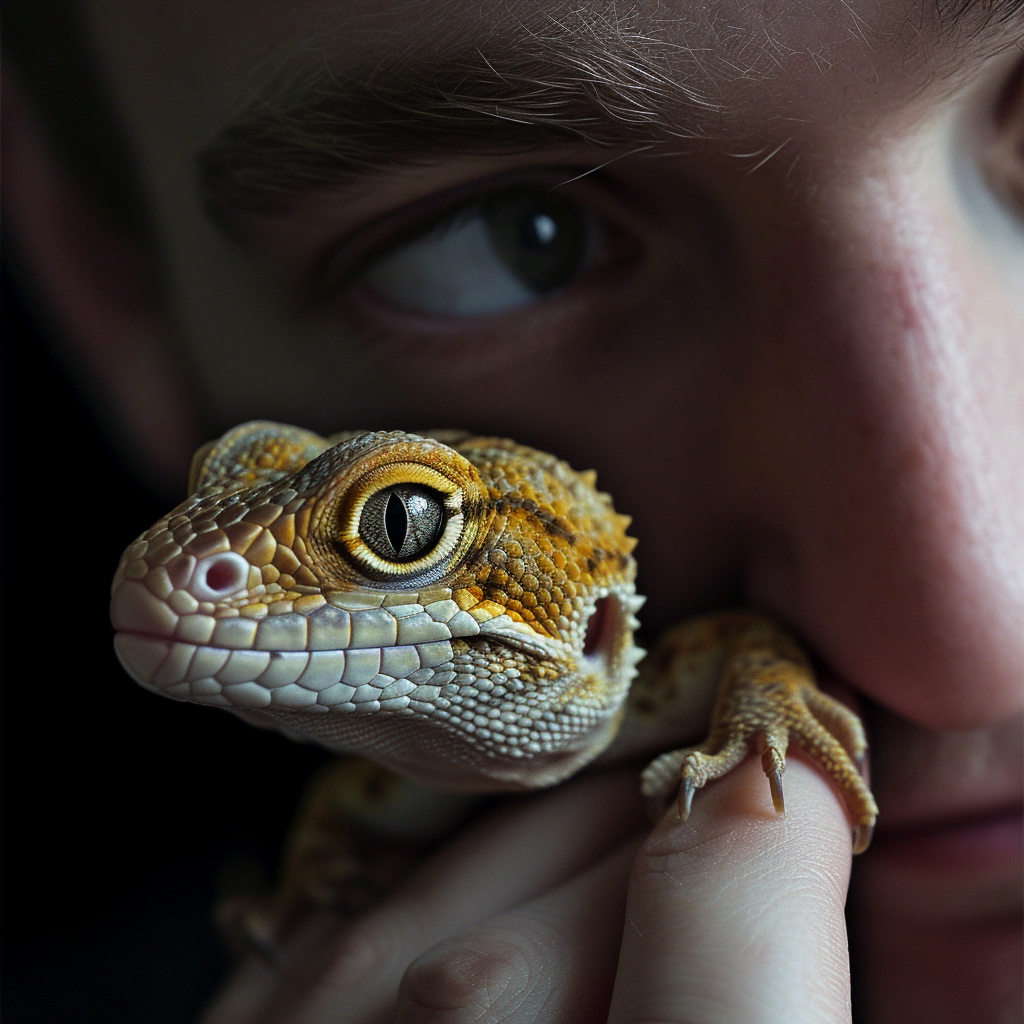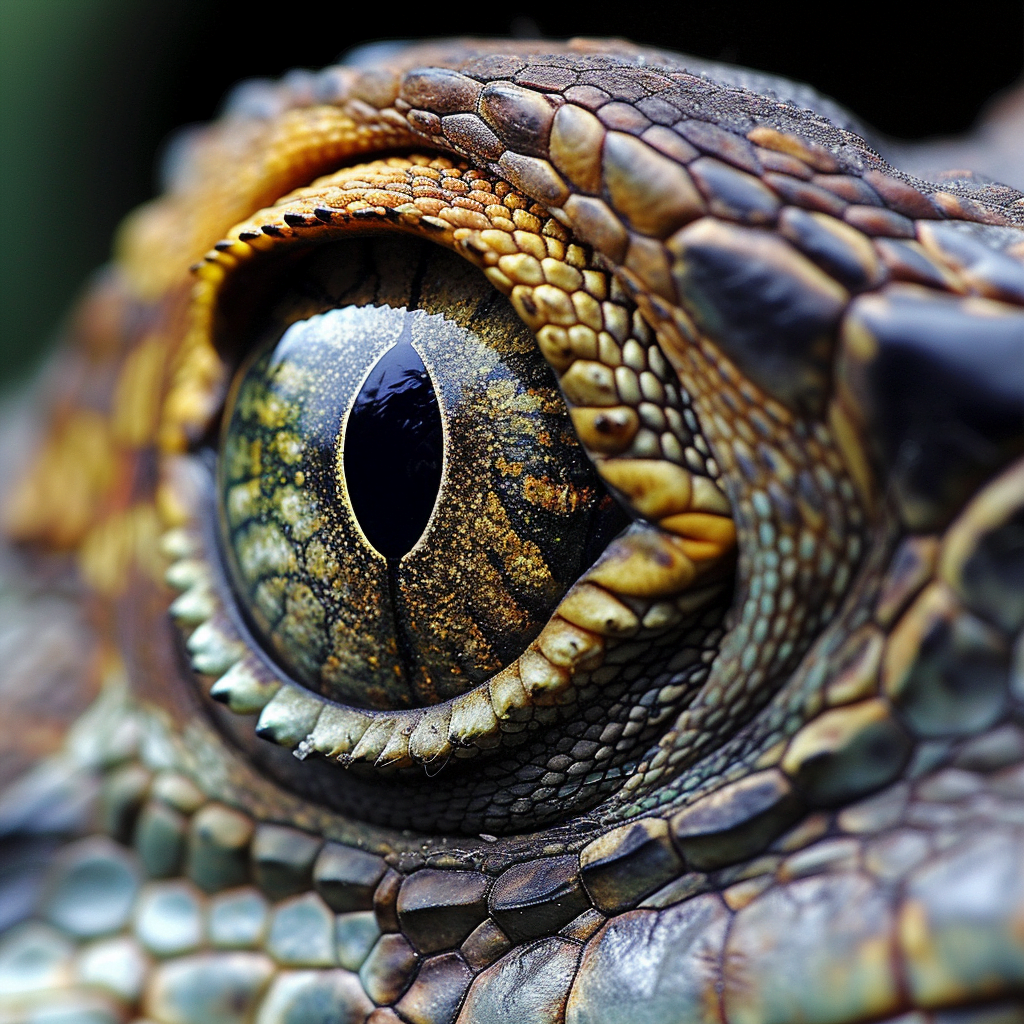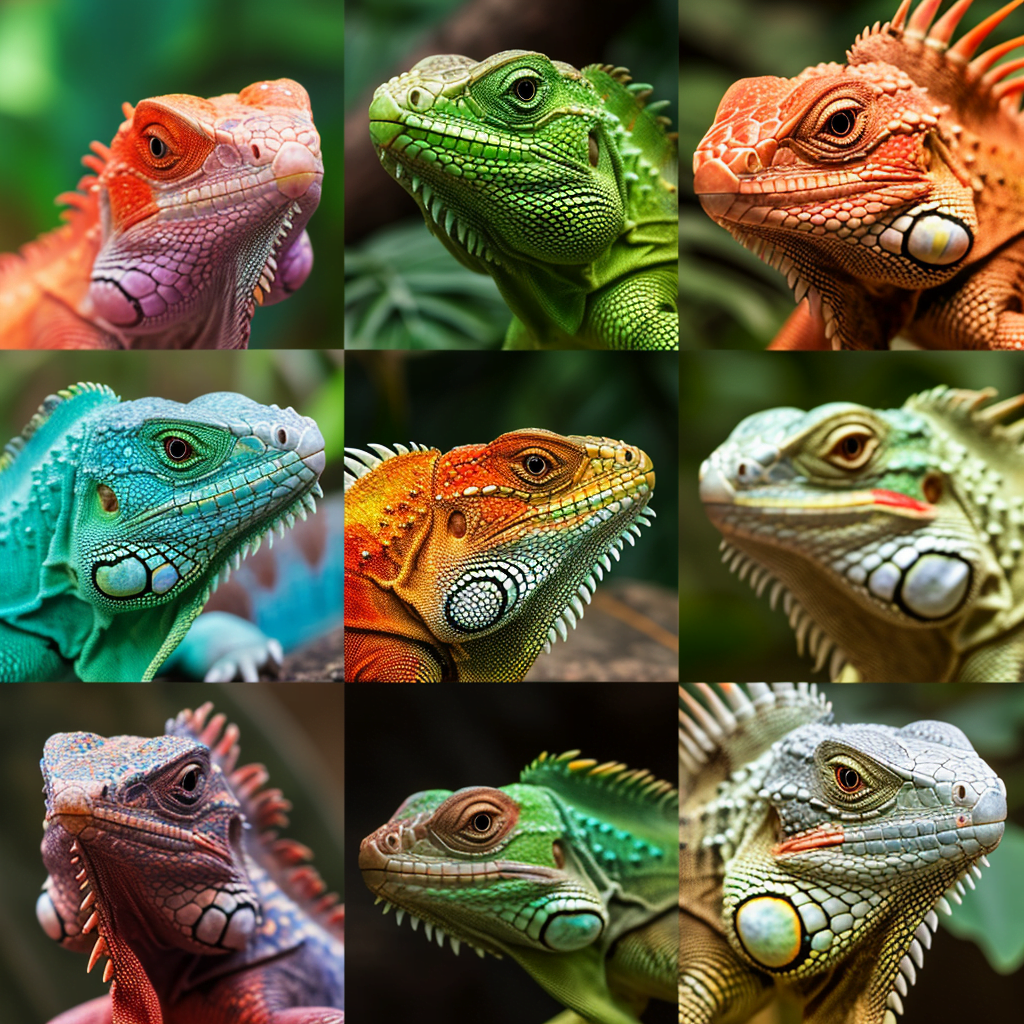Imagine a world where our body temperature is at the mercy of our surroundings. A world where we cannot generate our own heat to stay warm. Sounds difficult, right? Well, that’s the reality for reptiles. But have you ever wondered why are reptiles cold blooded? Is there a specific reason behind this evolutionary adaptation? And why do we even call them “reptiles” in the first place? In this article, we’ll uncover the fascinating answers to these intriguing questions, shedding light on the enigmatic world of these unique creatures.
| Parameter | Reptiles (Cold-blooded) | Mammals (Warm-blooded) |
|---|---|---|
| Body Temperature Regulation | Ectothermic (External regulation) | Endothermic (Internal regulation) |
| Metabolic Rate | Lower | Higher |
| Energy Consumption | Lesser, can conserve for longer periods | More frequent consumption required |
| Activity Level in Cold | Reduced, often inactive | Relatively consistent |
| Adaptation for Temperature | Basking, using microclimates | Fur/feathers, sweating, shivering |
| Predation Vulnerability | Often higher (due to reduced mobility in cold) | Reduced due to constant mobility |
| Dietary Efficiency | Can survive longer on less food | Requires regular food intake |
| Habitat Versatility | Diverse (from deserts to rainforests) | Also diverse, but can be active in cold |
| Thermoregulation Mechanisms | Behavioral (e.g., basking), some physiological | Mostly physiological |
| Potential Climate Change Risk | High (sensitive to external temperatures) | Moderate (though not immune) |
| Conservation Concerns | Habitat loss, temperature changes, illegal trade | Habitat loss, hunting, industrial impact |
Evolutionary History of Reptiles
Introduction to Reptiles
Reptiles are a diverse group of vertebrates that have a long evolutionary history. They belong to the class Reptilia and are characterized by several distinct features. Reptiles are ectothermic, meaning their internal body temperature is regulated by their environment rather than internally. This adaptation has played a significant role in their evolutionary success and allowed them to inhabit various environments across the globe.
Distinguishing Characteristics of Reptiles
Reptiles possess a set of defining characteristics that distinguish them from other groups of animals. One key feature is their scaly skin that provides efficient protection and prevents excessive water loss. Additionally, reptiles lay amniotic eggs, which enable them to reproduce on land and reduce their dependence on aquatic environments. Another characteristic unique to reptiles is their ability to breathe using lungs, unlike amphibians that rely on both lungs and gills.
Transition from Amphibians to Reptiles
The transition from amphibians to reptiles marked a significant evolutionary milestone. Reptiles evolved from amphibian-like ancestors during the Carboniferous period, approximately 350 million years ago. This transition was driven by several key factors. Firstly, the development of the amniotic egg allowed reptiles to reproduce on land, reducing their reliance on aquatic habitats. Additionally, the evolution of scales provided a protective barrier against desiccation and enabled reptiles to inhabit drier environments more successfully.
Adaptations for Life on Land
Reptiles have developed numerous adaptations that allow them to thrive on land. One of the most notable adaptations is their ability to obtain oxygen through lungs, enabling them to breathe in environments where gills are not effective. Furthermore, the scaly skin of reptiles helps prevent dehydration and provides protection against predators. Reptiles also possess strong limbs and claws, allowing them to navigate diverse terrains and hunt prey effectively.
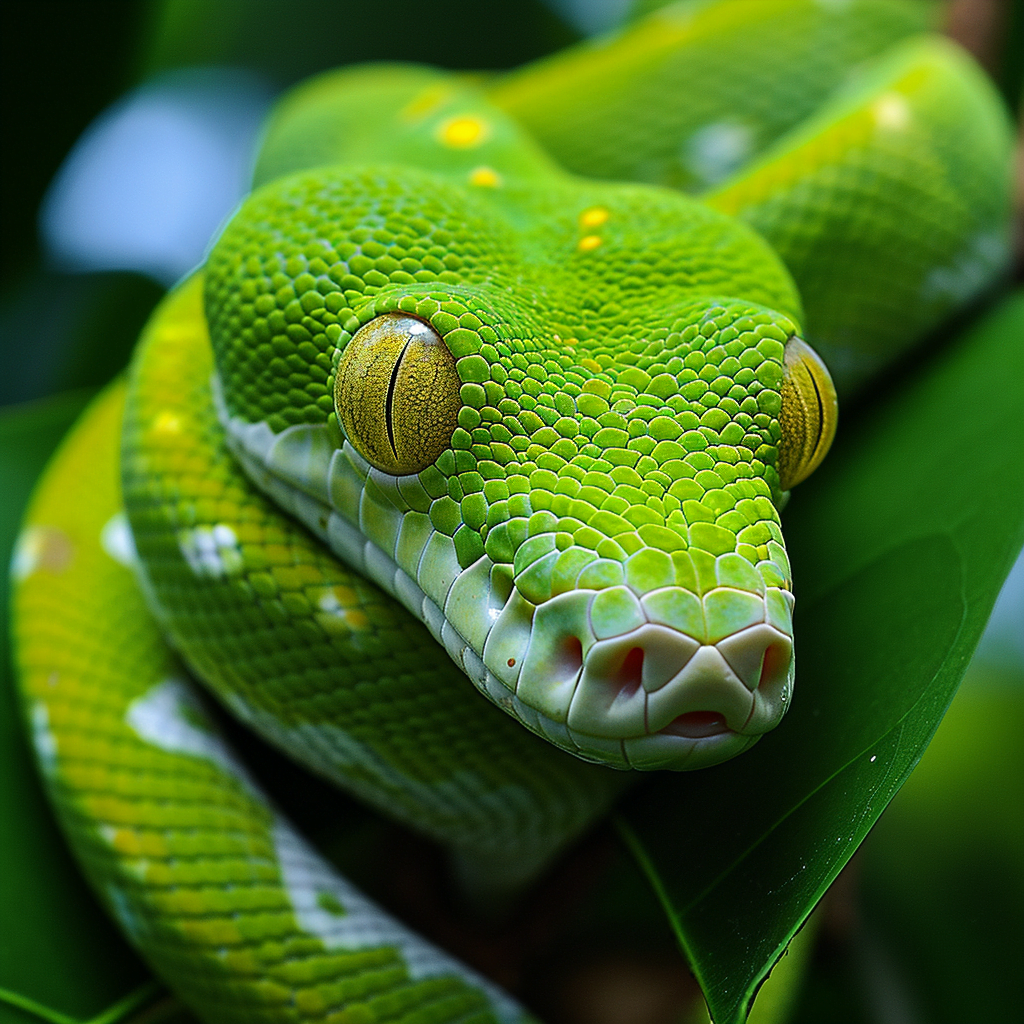
Understanding Cold-Bloodedness
Definition of Cold-Bloodedness
Cold-bloodedness, also known as ectothermy, refers to the inability of an organism to regulate its internal body temperature. Instead, its body temperature is determined by the surrounding environment. Cold-blooded animals, such as reptiles, rely on external heat sources to raise their body temperature for metabolic activities and maintain bodily functions.
Benefits of Being Cold-Blooded
Being cold-blooded offers several advantages to reptiles. Firstly, cold-bloodedness allows reptiles to conserve energy. Since they do not have to expend energy regulating their body temperature, reptiles have lower metabolic rates compared to warm-blooded animals. This energy conservation is particularly beneficial in environments with limited food availability.
Drawbacks of Being Cold-Blooded
While cold-bloodedness has its benefits, there are also some drawbacks. One significant disadvantage is that reptiles are highly dependent on environmental temperatures for their physiological processes. Extreme temperature fluctuations can have detrimental effects on their metabolism, digestion, and overall health. Additionally, cold-blooded animals are often less active in cooler temperatures, limiting their ability to engage in vital activities such as hunting or finding mates.
Comparison with Warm-Blooded Animals
In contrast to cold-blooded reptiles, warm-blooded animals, also known as endotherms, can regulate and maintain a stable internal body temperature. Warm-blooded animals generate their heat through metabolic processes, allowing them to stay active and maintain bodily functions even in cold environments. This ability provides them with increased flexibility and adaptability compared to cold-blooded reptiles, especially in variable climates.
Factors Influencing Reptile Body Temperature
External Environmental Factors
External environmental factors play a crucial role in determining the body temperature of reptiles. Factors such as ambient temperature, humidity, and the presence of sunlight all contribute to the overall thermal environment that reptiles experience. This external temperature influences reptile behavior and physiological processes.
Behavioral Factors
Reptiles exhibit a range of behaviors to regulate their body temperature. Basking in the sun is a common behavior observed in many reptiles, where they expose themselves to sunlight to absorb heat and raise their body temperature. Conversely, seeking shade or burrows helps reptiles escape excessive heat and maintain a cooler body temperature.
Physiological Factors
Some reptiles possess physiological adaptations that allow them to adjust their body temperature. For example, some reptiles have a system of blood vessels called a “rete mirabile” that enables them to exchange heat between their arterial and venous blood, effectively cooling or warming themselves as needed.
Thermal Regulation Mechanisms
Reptiles employ various mechanisms to regulate their body temperature. The most common mechanism is behavioral thermoregulation, such as moving between sunlit and shaded areas. Additionally, some reptiles can engage in evaporative cooling by panting or gular fluttering, similar to birds. This mechanism allows them to dissipate excess heat and maintain a more comfortable body temperature.
Advantages of Cold-Blooded Nature for Reptiles
Energy Conservation
One significant advantage of being cold-blooded is the ability to conserve energy. Cold-blooded reptiles have lower metabolic rates compared to warm-blooded animals, as they do not have to generate as much internal heat. This reduced energy expenditure allows reptiles to survive in environments where food availability is limited.
Survival in Extreme Environments
Cold-blooded reptiles are well-suited to survive in extreme environments, including deserts and tropical rainforests. Their ability to regulate their body temperature by seeking out specific microclimates helps them cope with harsh conditions. Reptiles can find shelter or bask in the sun to raise or lower their body temperature, adapting to the environment’s challenges.
Ability to Perform High-Energy Activities
Despite being cold-blooded, reptiles are still capable of performing high-energy activities when necessary. By utilizing external heat sources, such as the sun, reptiles can increase their body temperature, allowing for bursts of energy and agility required for tasks like hunting or escaping predators.
Efficient Hunting and Digestion
Cold-blooded reptiles have evolved to be highly efficient hunters and have a unique advantage in their digestion process. As their metabolic rate is lower, they can digest food more slowly, extracting maximum nutrients from their prey. This efficiency enables them to survive on irregular feeding patterns and store energy for extended periods.
Challenges Faced by Cold-Blooded Reptiles
Slow Metabolic Rate
One significant challenge faced by cold-blooded reptiles is their slow metabolic rate. Due to their reliance on external heat sources, their metabolic processes are highly temperature-dependent. Low environmental temperatures can reduce their metabolic activity, limiting their ability to perform essential functions such as digestion and reproduction.
Environmental Limitations
Cold-blooded reptiles are highly susceptible to environmental changes, especially temperature fluctuations. Extreme temperatures, either too high or too low, can be detrimental to their health and survival. If the temperature exceeds their thermal tolerance range, it can lead to dehydration, heatstroke, or even death. Similarly, exposure to cold temperatures can impair their physiological processes and leave them vulnerable to predators.
Vulnerability to Predators
Cold-blooded reptiles are often at a disadvantage in terms of speed and agility compared to warm-blooded predators. Their reliance on external heat sources for energy hampers their ability to engage in sustained activity or escape from predators efficiently. This vulnerability makes reptiles more susceptible to predation, necessitating the development of additional defensive strategies to compensate for their cold-blooded nature.
Inefficient in Colder Climates
The cold-blooded nature of reptiles makes them ill-suited for colder climates. In regions with cold temperatures, reptiles may become sluggish or even enter a state of hibernation to conserve energy and survive the harsh conditions. However, prolonged exposure to cold temperatures can still be detrimental to their health and overall well-being.
Reptile Thermoregulation Strategies
Basking
Basking is a common thermoregulation behavior observed in reptiles. Reptiles, such as lizards and snakes, often bask in the sun to absorb heat and elevate their body temperature. They position themselves in locations where sunlight is ample, such as rocks or elevated branches, and expose their bodies to the direct rays of the sun to maximize heat absorption.
Seeking Shade or Burrows
To avoid excessive heat, reptiles seek out shaded areas or burrows. By retreating to cooler locations, reptiles can lower their body temperature and prevent overheating. Dense vegetation, caves, or underground burrows provide natural shelters where reptiles can escape the direct impact of the sun’s heat.
Behavioral Adaptations
Reptiles exhibit various behavioral adaptations to regulate their body temperature. For example, they may orient themselves with respect to the sun’s position to maximize or minimize heat absorption. They might also adjust their body posture, such as stretching or flattening their bodies, to increase or decrease surface area exposed to sunlight.
Benefiting from Microclimates
Reptiles take advantage of microclimates within their environment to regulate their body temperature effectively. Microclimates refer to local variations in temperature and humidity, which can differ significantly from the surrounding environment. By utilizing microclimates, reptiles can find areas that suit their preferred body temperature range and maintain optimal conditions for their physiological processes.
Evolutionary Advantages of Being Cold-Blooded
Conserving Energy for Longer Periods
Being cold-blooded provides reptiles with the ability to conserve energy for extended periods. By not having to maintain a constant internal body temperature like warm-blooded animals, reptiles can enter periods of low activity or hibernation, effectively conserving energy resources until environmental conditions become more favorable.
Adaptability to Variable Environments
The cold-blooded nature of reptiles allows them to adapt to a wide range of environments. They can occupy diverse habitats, from tropical rainforests to arid deserts, by utilizing behavioral and physiological adaptations for thermoregulation. Their ability to adjust their body temperature in response to external conditions enables them to survive and thrive in environments that might be challenging for warm-blooded animals.
Sustained Activity in Low Food Availability
Reptiles, being cold-blooded, can sustain their activity levels even when food availability is limited. Their lower metabolic rates and energy-efficient digestion enable them to survive on infrequent meals. This characteristic is particularly advantageous in environments where food resources are scarce or seasonal, allowing reptiles to persist during periods of food scarcity.
Increased Reproductive Efficiency
Cold-blooded reptiles also benefit reproductively from their ectothermic nature. They can adjust their reproductive activities based on environmental conditions, such as temperature and food availability. This flexibility allows them to time their reproductive cycles with optimal conditions, maximizing their chances of successful reproduction and ensuring the survival of their offspring.
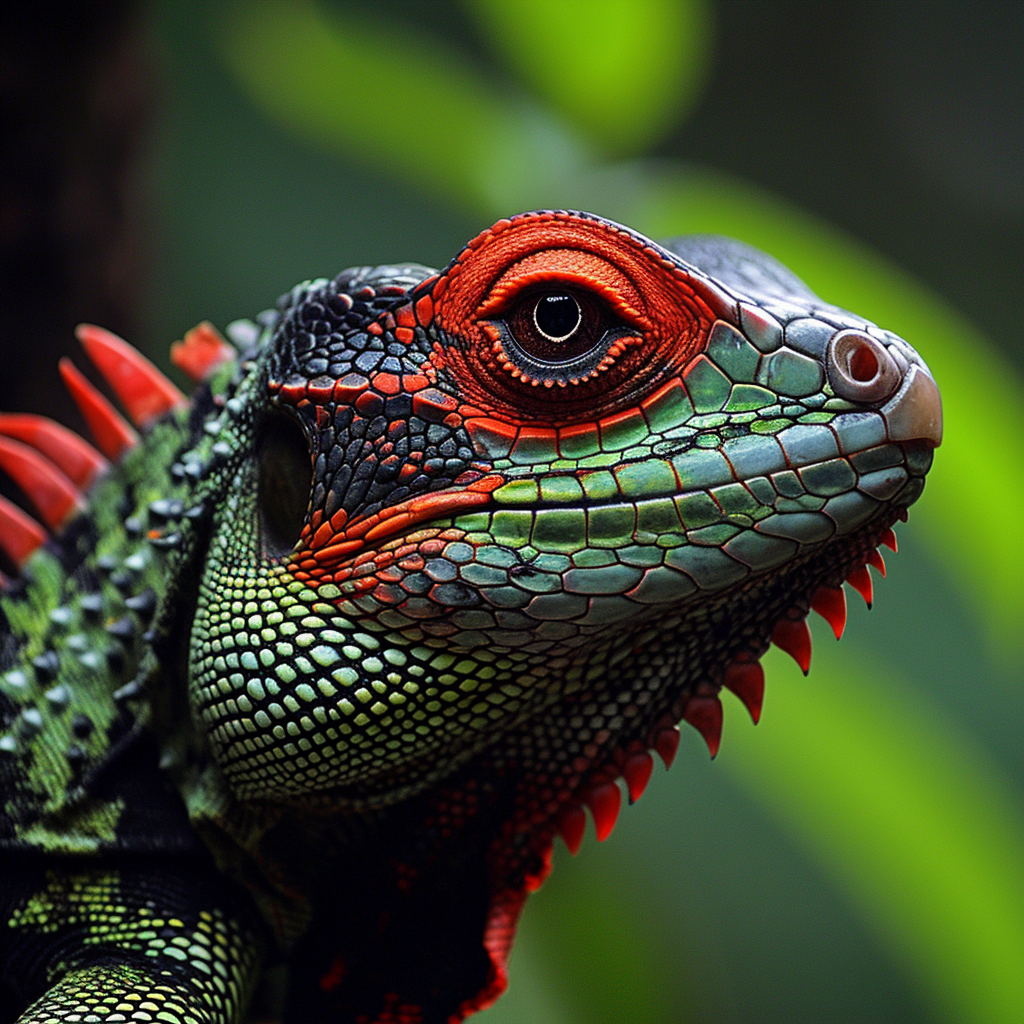
Comparison with Warm-Blooded Animals
Advantages of Warm-Bloodedness
Warm-blooded animals have several advantages compared to their cold-blooded counterparts. One key advantage is their ability to maintain a constant internal body temperature, irrespective of environmental conditions. This stability provides warm-blooded animals with a continuous level of energy to engage in sustained activity, even in fluctuating or extreme environments.
Adaptations for Constant Body Temperature
Warm-blooded animals possess various adaptations to regulate and maintain their constant body temperature. This includes increased metabolic rates, insulation layers such as fur or feathers, and the ability to shiver or sweat to generate or lose heat as needed. These adaptations allow warm-blooded animals to function optimally, both in colder climates and during periods of increased activity.
Difference in Energy Requirements
Warm-blooded animals generally have higher energy requirements compared to cold-blooded reptiles. The energy expended in maintaining a constant body temperature and sustaining high metabolic rates necessitates a more consistent supply of food resources. Warm-blooded animals often have to eat more frequently and ingest larger quantities of food to meet their energy needs.
Ecological and Behavioral Implications
The warm-blooded nature of animals impacts their ecological interactions and behavioral patterns differently from cold-blooded reptiles. Warm-blooded animals can actively hunt and forage over extended periods, displaying sustained energy-intensive activity. Additionally, their constant body temperature allows them to occupy more diverse ecological niches, expanding their range of potential habitats.
Reptiles and Ectothermy
Definition and Significance
Ectothermy refers to the reliance on external heat sources for thermoregulation. This term is often used interchangeably with cold-bloodedness, as reptiles are typically ectothermic animals. The ectothermic nature of reptiles has shaped their physiological and behavioral characteristics, influencing their survival strategies and ecological roles.
Evolutionary Basis of Ectothermy
The evolutionary basis of ectothermy can be traced back to the ancestral reptilian lineage. As reptiles evolved from amphibians, the reliance on external heat sources for metabolic activities became more pronounced. This adaptation allowed reptiles to colonize various habitats and diversify into different species with specialized thermoregulatory behaviors.
Relationship between Ectotherms and Cold-Bloodedness
Ectothermy is closely associated with the characteristic cold-blooded nature of reptiles. Reptiles rely on external heat sources, such as sunlight or warm surfaces, to raise their body temperature to a functional level. This reliance on environmental heat for thermoregulation is the defining feature of reptilian ectothermy. Ectothermy enables reptiles to adapt to diverse climates and environments, albeit with certain limitations.
Examples of Ectothermic Reptiles
The majority of reptiles, including snakes, lizards, turtles, and crocodilians, are ectothermic. These reptiles rely on external sources of heat to regulate their body temperature and function optimally. For example, desert-dwelling reptiles like desert iguanas and sidewinder snakes bask under the sun to raise their body temperature, while aquatic reptiles such as turtles may thermoregulate by alternating between sunlit and shaded areas.
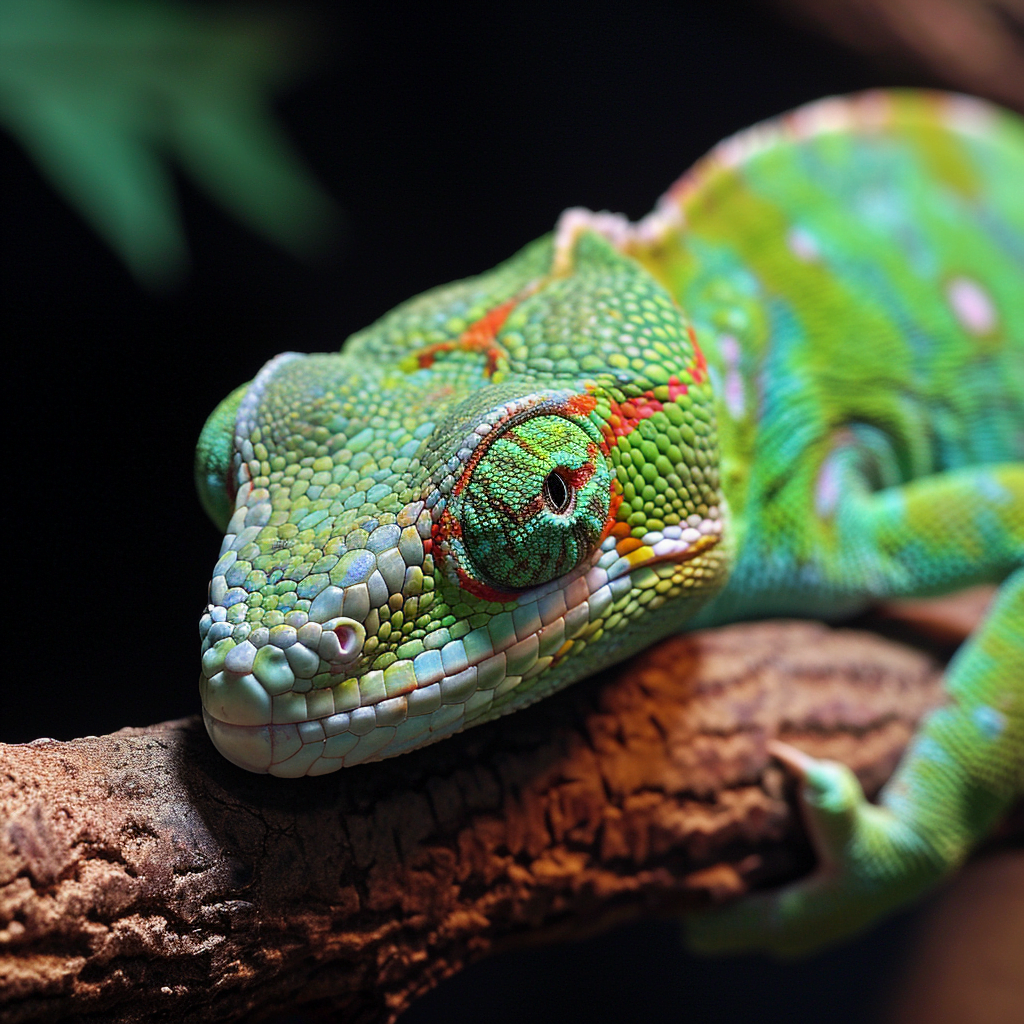
The Future of Cold-Blooded Reptiles
Climate Change Implications
The future of cold-blooded reptiles is intricately linked to the impacts of climate change. Rising global temperatures can affect reptiles’ natural habitats and disrupt their thermoregulation strategies. Shifts in temperature patterns and increased frequency of extreme weather events can pose challenges for reptiles, potentially impacting their distribution, breeding success, and overall survival.
Impact of Habitat Loss
Habitat loss and degradation pose significant threats to cold-blooded reptiles. As human activities encroach upon their natural habitats, reptiles face the loss of suitable environments for thermoregulation and foraging. This habitat fragmentation and destruction can disrupt their natural behaviors and lead to declines in population numbers.
Conservation Efforts
Conservation efforts play a crucial role in ensuring the survival of cold-blooded reptiles. The establishment of protected areas, such as national parks and reserves, helps preserve critical habitats for reptiles to carry out their thermoregulatory behaviors. Additionally, educating the public about the importance of reptile conservation and implementing measures to mitigate climate change can help safeguard reptile populations for future generations.
Potential Threats and Challenges
As cold-blooded reptiles face various threats, it is essential to address potential challenges. These challenges include illegal wildlife trade, pollution, invasive species, and disease outbreaks. Overexploitation for the pet trade or traditional medicine can deplete reptile populations, while pollution can contaminate their habitats and affect their thermoregulation capacities. Invasive species may disrupt natural food chains and compete with reptiles for resources, further impacting their survival prospects.
In conclusion, reptiles are a remarkable group of animals with an evolutionary history that spans millions of years. Their cold-blooded nature, or ectothermy, has allowed them to adapt and thrive in diverse habitats across the globe. While being cold-blooded comes with its challenges, such as environmental limitations and vulnerability to predators, reptiles have developed various thermoregulation strategies to compensate for their ectothermic nature. The future of cold-blooded reptiles relies on effective conservation efforts to mitigate climate change impacts and reduce habitat loss. By understanding and valuing these incredible creatures, we can help ensure their continued existence and contribution to the biodiversity of our planet.
